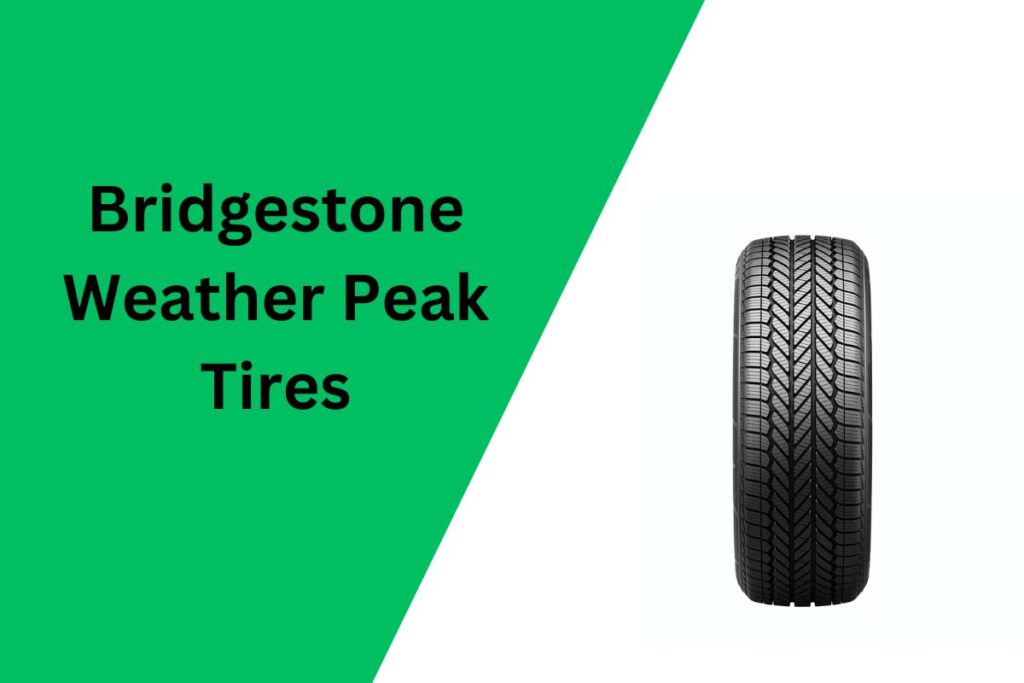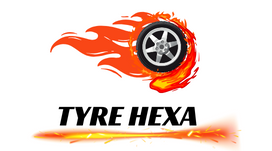This blog post compares the Michelin Cross Climate 2 and the Bridgestone Weather Peak. Both tires are great for winter driving, with 3PMSF certification. We aim to help you choose wisely. We’ll cover their pros and cons, features, reviews, and ratings. Also, we’ll share tips to care for your tires.
We’ll look at the unique features, benefits, and performance of these top tires. Our goal is to help you choose well and keep your tires ready for any road condition.

Benchmarks of characteristics:
| Characteristic | Michelin CrossClimate 2 | Bridgestone Weatherseal |
|---|---|---|
| Wet Traction | Better wet grip and acceleration due to more siping and chamfered edges | Good hydroplaning resistance, but lower wet grip due to less siping |
| Dry Traction | Excellent dry braking and handling due to directional tread design and rigid tread blocks | Comparable dry performance to Michelin, but slightly lower dry braking |
| Snow Traction | Superior snow traction and braking due to snow vices, 3D sipes, and V-shaped tread pattern | Good snow traction, but not as good as Michelin due to less biting edges and less aggressive tread design |
| Ice Traction | Outstanding ice traction and braking due to interlocking sipes and rubber compound | Decent ice traction, but not as good as Michelin due to less siping and less flexible rubber compound |
| Fuel Efficiency | Lower fuel efficiency due to higher rolling resistance | Higher fuel efficiency due to lower rolling resistance |
| Tread Life | Good tread life, but lower than Bridgestone due to lower UTQG rating and higher rolling resistance | Better tread life than Michelin due to higher UTQG rating and lower rolling resistance |
| Ride Comfort | Very comfortable and quiet ride due to noise-optimized tread design and cushioning rubber compound | Very comfortable and quiet ride due to symmetrical tread design and cushioning rubber compound |
Tread Appearance
The Michelin Cross Climate 2 is an all-season tire with a V-shaped tread for better braking and grip on wet and snowy roads. It also resists hydroplaning. Deep channels and 3D sipes keep it stable as it wears. Its aggressive look sets it apart, working well in various conditions.
Conversely, the Bridgestone Weather Peak has a standard tread. It includes large shoulder blocks, sipes, and snow vices for dry grip and cornering. Its grooves manage water and slush, reducing hydroplaning and boosting wet traction. This design complements grand touring tires like the Michelin Cross Climate 2, ensuring good wet performance with solid grip and water management.
Detailed Comparison (Bridgestone Weather Peak And Michelin Cross Climate 2 Tires)
- Design Comparison: The Michelin Cross Climate 2 and Bridgestone Weather Peak are advanced all-season tires. They both have 3PMSF certification for winter driving. The Cross Climate 2 has a V-shaped tread. This design boosts grip, snow traction, and braking. It also reduces hydroplaning. Deep channels efficiently compact snow. Meanwhile, full-depth 3D sipes ensure stable grip. In comparison, the Bridgestone Weather Peak uses a standard asymmetric tread. It excels in dry grip, stability, and snow and ice performance. It also looks sleek.
- Noise and Ride Quality: The Michelin Cross Climate 2 is perfect for a smooth, quiet ride. In contrast, the Bridgestone Weather Peak is softer and also rated at 7.92/10 for ride quality. Both tires are for grand touring all-season use. However, they differ in noise, comfort, and ride quality. The Weather Peak is the quietest.
- Snow Traction: The Michelin Cross Climate 2 and Bridgestone Weather Peak are top winter tires. Both tackle snow with skill. Michelin uses advanced tech for solid snow grip. Meanwhile, Bridgestone ensures reliable winter traction. However, the Cross Climate 2 edges out the Weather Peak. It shines in snow braking, as shown by its shorter stopping distance.
- Durability and Treadwear: Tire durability and treadwear are key for tire life and cost. The Bridgestone Weather Peak and Michelin Cross Climate 2 are grand touring all-season tires. They have high UTQG ratings and long warranties. The Weather Peak stands out for its durability and mileage. It lasts long and offers high mileage. Meanwhile, the Cross Climate 2 might have a slightly shorter tread life.
- Dry Traction: The Michelin Cross Climate 2 and Bridgestone Weather Peak are both good for dry traction. However, the Cross Climate 2 edges out the Weather Peak in most tests and reviews. It has shorter braking distances and better acceleration, cornering, and handling. Consumer Reports gives it a 9/10, marking it as excellent for grip and control on dry roads.
- Wet Traction: Wet Grip: Michelin’s Cross Climate 2 has a better rubber formula. This formula improves wet traction and grip. Meanwhile, Bridgestone’s Weather Peak does well in wet traction. It uses a special tread pattern to channel water away from the tires. Hydroplaning: The deep grooves on the Cross Climate 2 reduce hydroplaning, acting like umbrellas in quick downpours. Meanwhile, Bridgestone’s Weather Peak adds wide grooves and edges to fight hydroplaning. Tests show the Cross Climate 2 is 4% better at resisting hydroplaning. It stays in touch with wet roads better, even at higher speeds.
- UTQG Rating: The UTQG system grades tire performance in treadwear, traction, and heat. Higher UTQG values mean longer life. Also, better grades suggest stronger wet grip and heat resistance. Therefore, tracking these stats is key for safe driving.
| Tire | Treadwear | Traction | Temperature |
| Michelin cross climate 2 | 600 | A | A |
| Bridgestone weather Peak | 740 | A | B |
Fuel Consumption: Fuel use affects tire choice, impacting the environment and costs. Less resistance means lower fuel use and better efficiency. Bridgestone’s tests show Weather Peak tires are 10% more efficient than Cross Climate 2. This cuts fuel costs and emissions. Michelin uses advanced rubber and treads to lower resistance, making driving greener.
Price Comparison: Price is crucial in tire selection. It signals the tires’ value and quality. Weather Peak tires cost $166 to $266, and Cross Climate 2 tires cost $170 to $382. Larger Weather Peak tires are generally cheaper. However, they are slightly more expensive than Cross Climate 2 tires. Michelin Cross Climate 2 tires are pricier but offer excellent performance and durability. They are a smart choice for safety and long-term use. Meanwhile, Bridgestone Weather Peak tires are good for those on a budget. Yet, they might not match the Michelin tires’ performance.
Tire Sizes Facts: The Michelin Cross Climate 2 and Bridgestone Weather Peak tires come in many sizes for different vehicles. Weather Peak sizes range from 16 to 22 inches. They are light and great for fast driving. Meanwhile, Cross Climate 2 tires have a lower speed rating, ideal for economical driving. Both tires have a 10/32-inch tread depth and are certified for severe snow. The Cross Climate 2 tires offer a slightly wider range of sizes.
When choosing between two tires, make sure your preferred size is available in your chosen brand. Consider factors like width, aspect ratio, diameter, speed rating, weight, and tread depth. These factors affect tire performance, comfort, and safety.
Vehicles Michelin Cross Climate 2 Vs Bridgestone Weather Peak Tires Will Fit
| Vehicle Make | Michelin Cross Climate 2 Fitment | Bridgestone Weather Peak Fitment |
|---|---|---|
| Toyota | Yes | Yes |
| Honda | Yes | Yes |
| Ford | Yes | Yes |
| Chevrolet | Yes | Yes |
| Nissan | Yes | Yes |
| Volkswagen | Yes | Yes |
| BMW | Yes | Yes |
| Mercedes-Benz | Yes | Yes |
| Audi | Yes | Yes |
| Subaru | Yes | Yes |
| Jeep | Yes | Yes |
| Hyundai | Yes | Yes |
| Kia | Yes | Yes |
| Mazda | Yes | Yes |
| Lexus | Yes | Yes |
| GMC | Yes | Yes |
| Ram | Yes | Yes |
| Dodge | Yes | Yes |
| Chrysler | Yes | Yes |
| Buick | Yes | Yes |
| Tesla | Yes | Yes |
| Volvo | Yes | Yes |
| Infiniti | Yes | Yes |
| Acura | Yes | Yes |
| Land Rover | Yes | Yes |
| Jaguar | Yes | Yes |
| Mitsubishi | Yes | Yes |
| Lincoln | Yes | Yes |
| Cadillac | Yes | Yes |
| Fiat | Yes | Yes |
| Mini | Yes | Yes |
| Porsche | Yes | Yes |
| Genesis | Yes | Yes |
| Alfa Romeo | Yes | Yes |
| Bentley | Yes | Yes |
| Maserati | Yes | Yes |
| Rolls-Royce | Yes | Yes |
| Aston Martin | Yes | Yes |
| McLaren | Yes | Yes |
| Lamborghini | Yes | Yes |
| Bugatti | Yes | Yes |
| Ferrari | Yes | Yes |
| Lotus | Yes | Yes |
| Karma | Yes | Yes |
| Rivian | Yes | Yes |
| Polestar | Yes | Yes |
FAQ’s
Michelin Cross Climate 2 and Bridgestone Weather Peak are both winter-certified tires. They stand out for their unique tread designs, performance, and prices. The Cross Climate 2 is excellent on ice, snow, and fuel efficiency. Meanwhile, the Weather Peak offers better wet traction, tread life, and comfort.
The optimal choice for winter tires depends on the specific conditions faced. Michelin Cross Climate 2 gives great grip and braking on icy roads. Bridgestone Weather Peak performs better on wet or slushy surfaces. This is thanks to its grooves and chamfered edges. They clear water and stop hydroplaning.
Bridgestone Weather Peak and Michelin Cross Climate 2 have different tread designs. Bridgestone uses a hard compound and symmetrical design. This ensures even wear. Meanwhile, Michelin opts for a soft compound and directional design. This leads to quicker wear. Notably, both come with a 60,000-mile treadwear warranty.
Bridgestone Weather Peak tires offer a smoother, quieter ride. They achieve this with reduced noise and improved handling. In contrast, Michelin Cross Climate 2 tires are noisier. Their design includes aggressive treads and stiff sidewalls, leading to more vibration.
Bridgestone Weather Peak tires are cheaper than Michelin Cross Climate 2. The Cross Climate 2, despite costing more upfront, might offer better fuel economy and winter traction. Prices vary based on size, availability, and seller.
